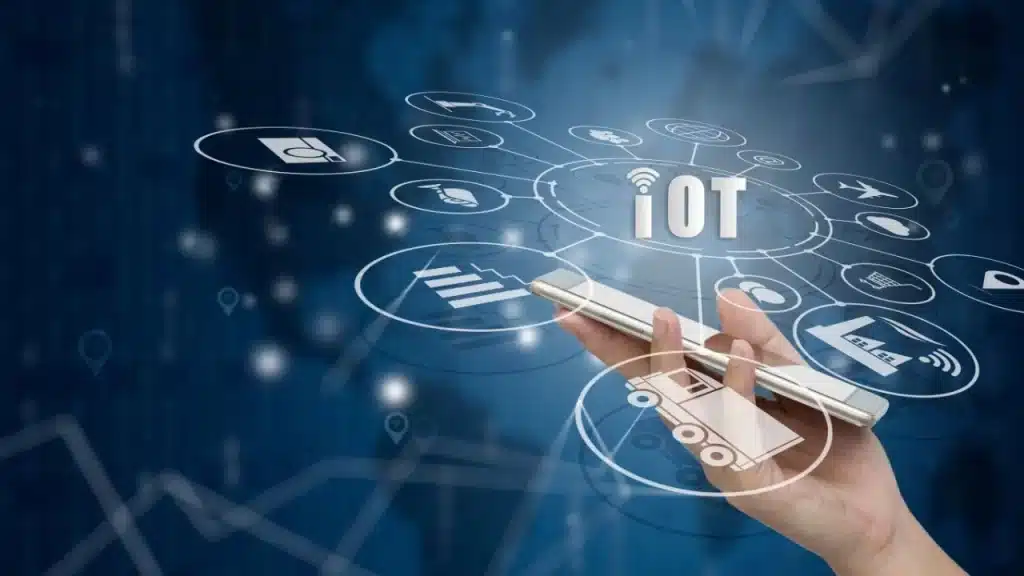IoT, or the Internet of Things, is one of those terms many people have heard and know about on a surface level but would need help explaining. It is a phrase used to depict a network of interrelated devices linked together and exchanging data between themselves and the cloud. These devices feature sensors, processing ability, and various other techs that communicate with each other, and this field has come to life because of the convergence of multiple technologies.
A substantial misnomer about the IoT is that its parts must be connected to the World Wide Web. This is inaccurate, as they only need to be tied into a network where they can be addressable individually. Examples of IoT devices are smart TVs/phones/speakers/wearables, and virtually any modern gadgets that can connect and streamline tasks.
How IoT & Digital Entertainment Connect
The Internet of Things has been a transformative step in creating personalized moments of enjoyment. Since it integrates multiple devices, people nowadays can have a tailored experience on various gadgets that live within a linked ecosystem. One’s smartphone knows all the information a home smart TV has, customizing content for users. A phone can be privy to the types of movies a user prefers based on what that individual commonly watches on streaming services integrated with his TV (Netflix, Amazon, Apple TV). Hence, there is no need to browse through an endless list of films, as these devices can curate recommendations based on past habits on both pieces of electronics and others in a household.
Alexa and Google Home, as well as other virtual assistance, can further enhance this engagement with tech by allowing voice-activated controls. Users can simply ask their assistants to play a show or song they may like, and given the synchronicity these have with other entertainment devices owned and operated by the same person, they can throw out adequate picks most of the time. Such hands-free control adds an unprecedented level of convenience. Smartwatches, fitness trackers, video game consoles, smart speakers, VR headsets, and other device types get added to this mix for a more unified experience in home digital entertainment.
Trends in IoT for Digital Entertainment
Everyone is now looking to integrate IoT with emerging technologies such as 5G, AI, and edge computing. Concerning the first, this fusion has already unlocked previously impossible gaming and digital entertainment options. 5G networks facilitate faster, more reliable connections, enabling IoT devices to communicate with almost no latency. That is crucial in gaming, where milliseconds can determine outcomes. The same goes for online gambling, where in games such as Crash options, as outlined in this Everygame review, gamblers have only a few seconds between rounds to set their stake and opt in the upcoming gambling action. Therefore, the low-latency and high-bandwidth capabilities of 5G allow real-time data synchronization, creating a responsive experience for players. The same holds for edge computing, as real-time responsiveness improves by processing data closer to the source.
For example, a console with IoT sensors can instantly monitor a player’s real-time performance and adjust their difficulty level. AI algorithms can also process observed action and analyze behavior for hyper-personalized gaming, which can entail suggestions for in-game purchases that boost one’s scores or upcoming titles of potential interest.
It is a popularly held belief that VR, AR, and Mixed Reality (MR) tech is the future of digital entertainment, with IoT acting as the backbone that will support this rise, as it will enable data collection from VR/AR/MR devices, such as movements, gestures, and biometrics, allowing games to adapt to the player’s physical and emotional state. How cool is that? In terms of iGaming, this technology will blur the lines between playing at a land-based casino and enjoying games of chance and poker from home.
The Challenges and Risks of IoT in Entertainment
Naturally, privacy and data security are a top priority. The more data IoT devices collect, the greater the risk of misuse. If privacy controls and measures are weak or if they have been mismanaged, personal information could be exposed. That can, of course, create identity theft and fraud problems. With the number of interconnected devices, these cybersecurity risks are becoming greater. IoT devices often get targeted as entry points for malicious actors into more extensive networks, as they usually lack complex security protocols. Distributed Denial of Service (DDoS) attacks are a common threat. Since IoT devices are used to overwhelm platforms, they are temporarily inaccessible.
Something that needs to be addressed is that for IoT to function smoothly, for entertainment or whatever, robust infrastructure must be in place. This includes reliable/fast internet connections, secure cloud platforms, local data centers, and edge computing technologies that can handle the vast amount of data generated by connected devices. That is not the case everywhere on the globe.
